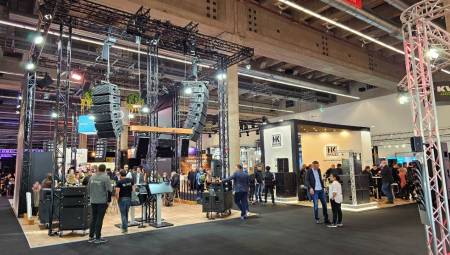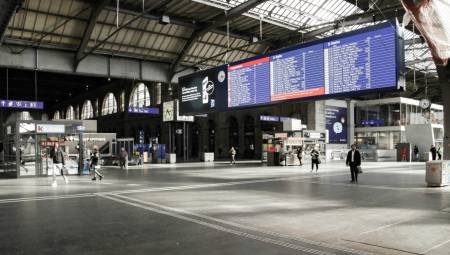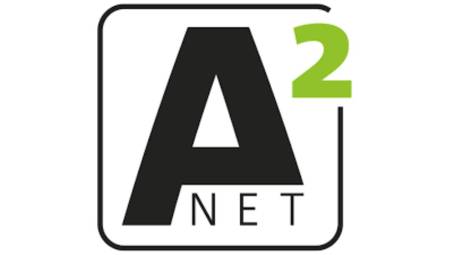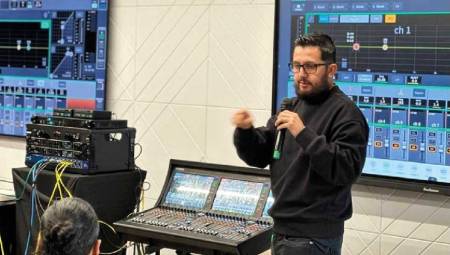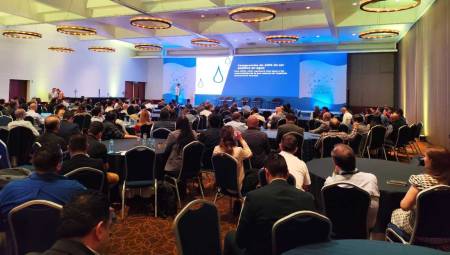 Latin America. It's coming, it's already at the door and soon we will have to live with the new Wi-Fi 6. The new standard will solve bottlenecks in spaces where many signals coexist at once. Higher speed, lower saturation and higher bandwidth will allow new critical applications especially in terms of video: high-resolution multi-party conferencing, zero-latency gaming, television and multicast services on all our devices and more. And you already know what Wi-Fi 6 is all about?
Latin America. It's coming, it's already at the door and soon we will have to live with the new Wi-Fi 6. The new standard will solve bottlenecks in spaces where many signals coexist at once. Higher speed, lower saturation and higher bandwidth will allow new critical applications especially in terms of video: high-resolution multi-party conferencing, zero-latency gaming, television and multicast services on all our devices and more. And you already know what Wi-Fi 6 is all about?
The latest generation of the Wi-Fi standard is Wi-Fi 6, also known as 802.11ax, and is the latest step on a path of continuous innovation. This standard leverages the strengths of the 802.11ac standard and adds efficiency, flexibility, and scalability, enabling new and existing networks to increase speed and capacity with next-generation applications.
The Institute of Electrical and Electronics Engineers (IEEE) proposed Standard 6 to combine the freedom and high speed of Gigabit Ethernet wireless access with the reliability and predictability of licensed radios.
What benefits does Wi-Fi 6 provide?
The Wi-Fi 6 standard enables enterprises and service providers to support new and emerging applications on the same wireless LAN infrastructure (WLAN) while simultaneously providing higher-level service than older applications. This landscape lays the groundwork for new business models and increased Wi-Fi adoption.
Are the Wi-Fi 6 standard and the 802.11ax standard two different things?
No, they are the same. The Wi-Fi Alliance began a campaign to coin the term "Wi-Fi 6" to refer to the IEEE 802.11ax standard. Indicates that the standard belongs to the sixth generation of Wi-Fi. The argument was to simplify the marketing message so that 802.11ax can be in a better position relative to the Third Generation Partnership Project (3GPP) standards used in cellular technology (such as 5G).
Benefits of the Wi-Fi 6 standard
Wi-Fi 6 will build on the success of 802.11ac. It will allow access points to support more clients in dense environments and make the experience with typical wireless LANs better. In addition, it will enable more predictable performance of advanced applications, such as 4K or 8K video, high-definition and high-density collaboration applications, fully wireless offices, and the Internet of Things (IoT).
Wi-Fi hotspot
Some Wi-Fi 6 access points are already on the market for those who want to adopt it early and for customers eager to try the new standard.
Will Wi-Fi 6 support 802.11ac?
As with any other recent advancement of Wi-Fi technology, the Wi-Fi 6 standard is backward compatible as it builds on existing technologies and increases their effectiveness.
Wi-Fi evolves and stimulates opportunities
Wi-Fi (Wireless Fidelity) has become a ubiquitous technology, providing connections for millions of devices; and is today the first choice of many users to access the world of the internet, gradually replacing cable access. Solutions that are based on the free use or non-tendered mode of the frequency spectrum, have been making significant progress in their application models recently, including in the novel dynamic and shared mode of allocation, such as the
Wi-Fi 6, the latest generation released commercially in September 2019, greatly improves wireless performance in multiple facets, providing a new and improved end-user experience compared to previous versions. This allows you to efficiently deliver more capacity to more devices, reducing congestion and delivering higher quality in high-density deployments. Currently, there are already routers, devices and mobile terminals with Wi-Fi 6, of different brands and models of the large manufacturers of the world market.
Offering all the features mentioned above, Wi-Fi 6 is considered key to enabling new solutions and applications based on Augmented Reality (AR) and Virtual Reality (VR) to be developed. It also brings with it a smoother experience for service offerings that require high-definition (HD) streaming such as 4K/8K. In addition to the exponential increase in Internet of Things (IoT) and 5G applications and devices, which makes Wi-Fi 6 an ideal complement to the development of these and other technologies.
The availability of devices with Wi-Fi 6 will be increasingly consolidated with the growing demand for the aforementioned applications, both in the private and public sectors, such as airports, public transport, shops, smart cities, retailers / wholesalers, sports fields, health care, among others.
Wi-Fi and 5G will play complementary roles to meet the different demands and specificities of connectivity. The different optimization modalities by which both technologies have been designed, both in what is inside (privileging capacity and density) or outdoors (privileging coverage and mobility) will allow countless applications and uses.
In summary, the advantages of Wi-Fi 6 are:
- Better performance in environments with high demand: Improves average performance per user in dense or congested environments;
- Higher speed: Delivers a higher peak data rate for a single device;
- Increases network efficiency: Makes the most of the resources of the technologies it works with to have low latency; and
- Improves the battery efficiency of the devices: Allows you to configure schedules so that the devices are not connected to the network all the time and only do it when necessary
Text published by the Mexican technology integration company Multimedia.




